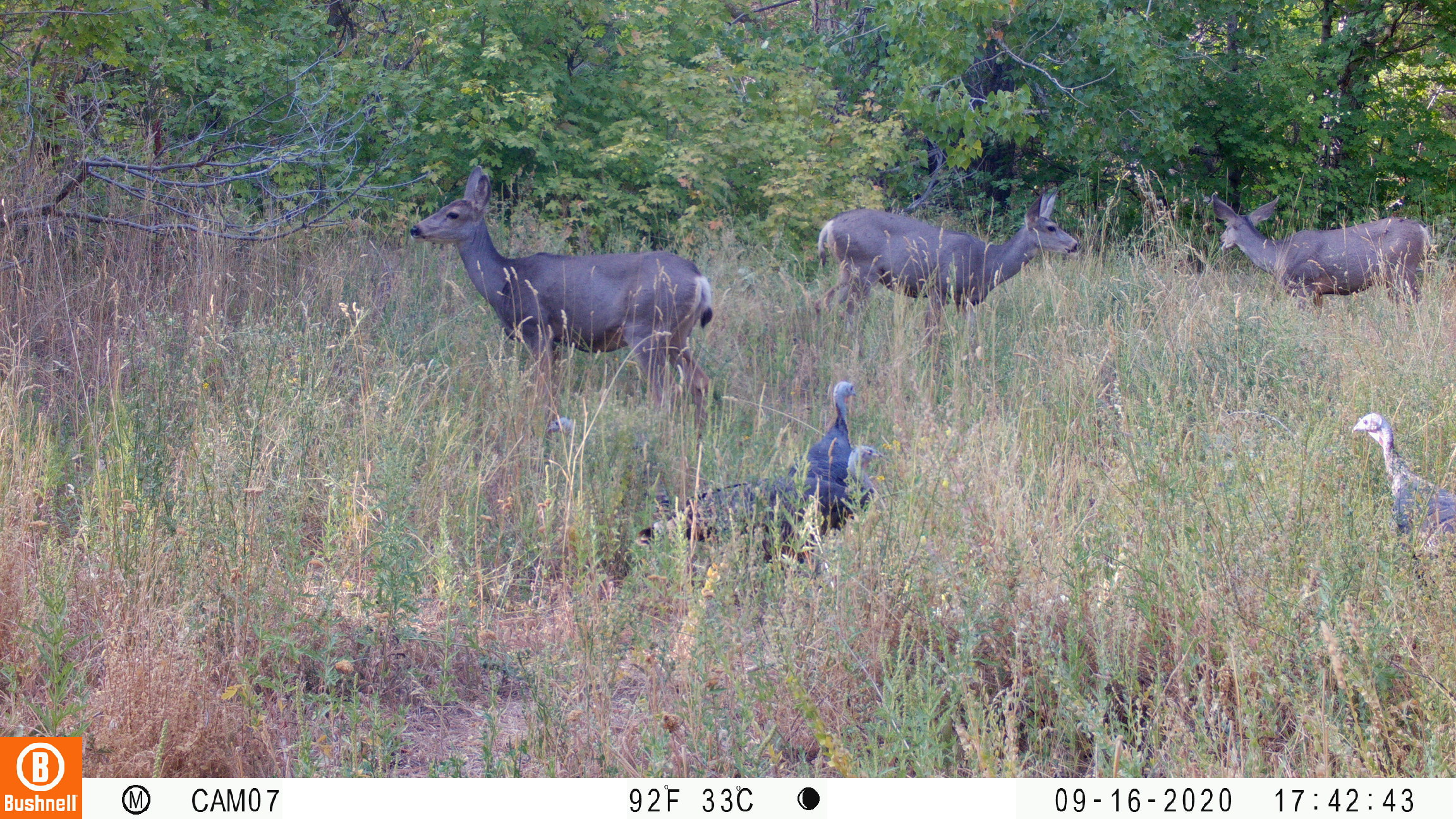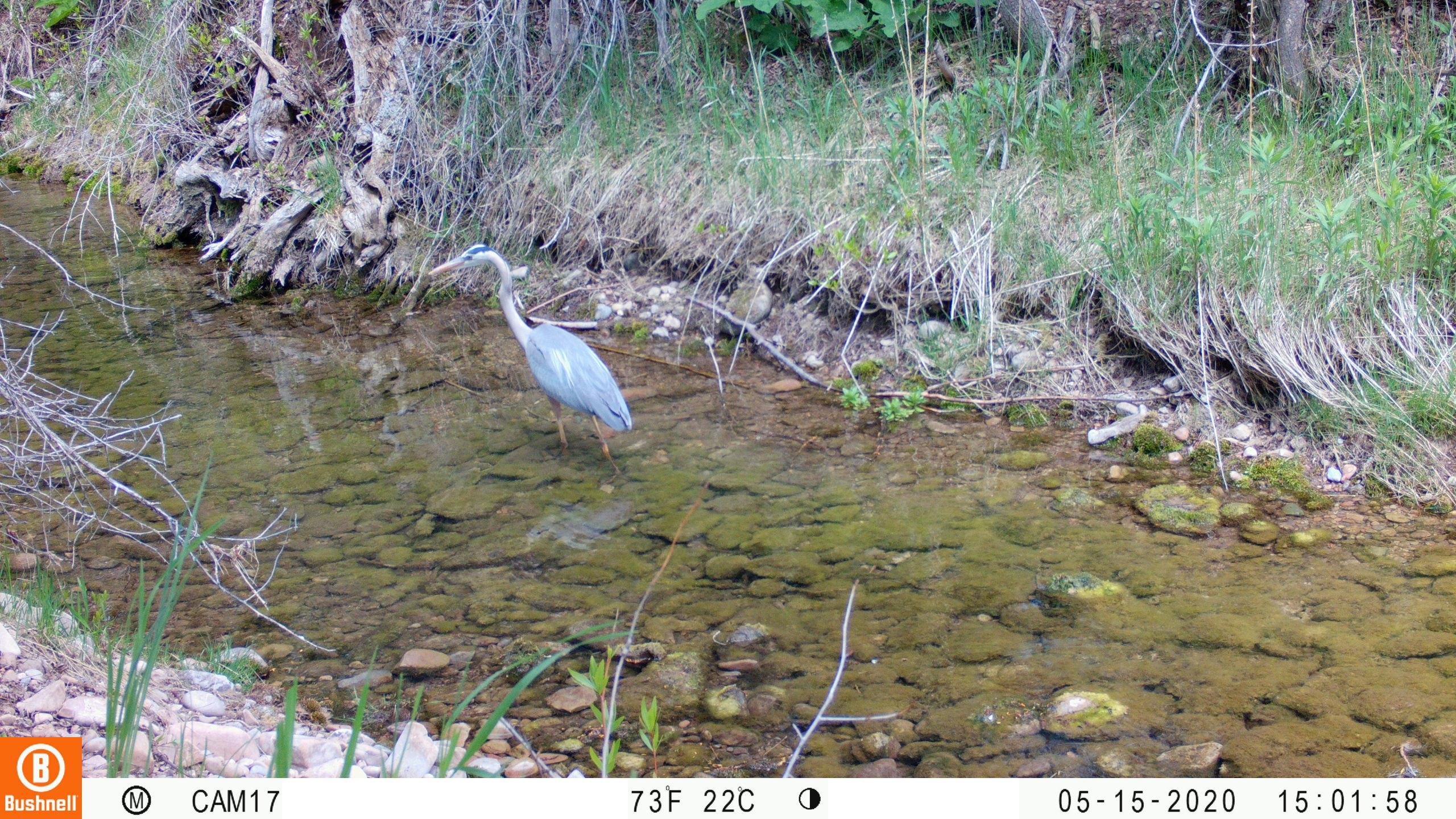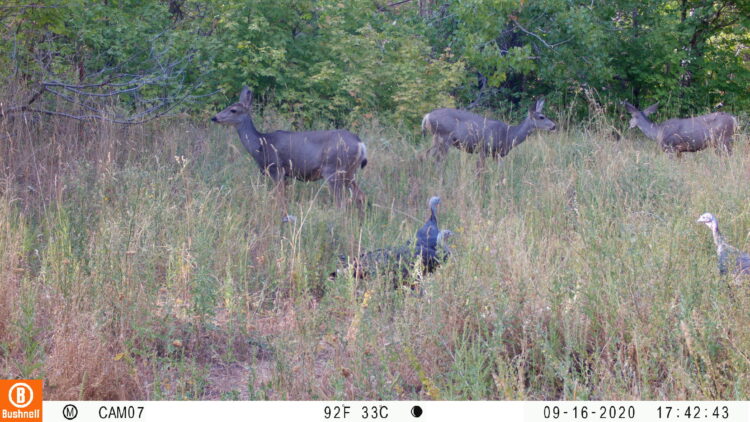Researchers share how trail cameras enabled science to continue even without fieldwork
Credit: Austin Green/University of Utah
For scientists, especially graduate students, who conduct fieldwork, every day is precious. Researchers meticulously prepare their equipment, procedures and timelines to make sure they get the data they need to do good science. So you can imagine the collective anxiety that fell across academia in spring 2020 when COVID-19 struck and many universities suspended in-person activities, including fieldwork.
But for Austin Green, a doctoral student in the School of Biological Sciences and 2019 recipient of a National Geographic Society Early Career Grant, who studies the wildlife that lives in the canyons of the Wasatch Front, that anxiety was tempered by the knowledge that pandemic or no pandemic, his network of automated motion-activated trail cameras would keep their silent watch over the canyons’ mammals and birds.

Deer and wild turkeys.
“You can set them up at the beginning of the year and leave them up until your field season is over,” Green says. “And we were not the only ones that did this. In fact, there were entire nationwide and global initiatives that were able to continue gathering data during pandemic restrictions on field research.”
Now Green and his colleagues are sharing what they’ve learned about the importance of trail cameras for wildlife conservation and management in the journal Biological Conservation. As the COVID-19 pandemic has shown, they write, automatic trail cameras are good tools for a wide range of environments and research questions.
Watching the wildlife
Trail cameras (also called camera traps although they don’t trap or restrain anything) are motion-activated cameras that researchers can attach to a tree or pole, usually at knee-height, in remote areas. The cameras then take photos whenever something walks by. Some models transmit photos wirelessly, but many collect photos on an SD card, which researchers like Green change out periodically when they change the camera’s batteries. They can also be programmed to capture video to document fascinating vignettes of animal behavior.

Coyote.
“All newer models have exceptional battery life and photo storage capacity,” Green says. “So, we set them up before restrictions went into place and kept them up throughout the entire field season, allowing us to gather another full season of data.”
Even before the COVID-19 pandemic, biologists were already turning to trail cameras as a way to conduct biological surveys that avoided the difficult, labor-intensive process of physically trapping, tagging and releasing of animals.
“However, with trail cameras, researchers can monitor individual animals passively over a large number of cameras and a large area, as long as the individuals can be individually identified through photographs,” Green says. “Cameras do not need to be maintained on a daily basis, and no individual animals ever need to be processed.”
Inspiring volunteers
For Green’s purposes, trail cameras are perfect. He’s looking to study the wildlife that inhabit the canyons of the Wasatch Front, and with the help of a team of more than 200 community volunteers, maintains 300 trail cameras stretching as far north as Logan, Utah and as far south as Point of the Mountain. The cameras have captured images of turkeys, herons, moose, coyotes, cougars and many others.
When COVID-19 restrictions began, Green quickly adapted his operation, moving training materials online and setting up a contactless pick-up method for equipment. Crowdsourced data entry proceeded as it had before. Green calls the efforts of his community volunteers inspiring.
“No matter what changes we threw at them, whether it was going completely online for all non-fieldwork related logistics or having to individually find time to disperse equipment, these amazing people never missed a beat,” Green says. “One thing I’ll take from this and apply to my research moving forward is that, even in hard times, there are always those willing to do what is necessary to get the job done.”
And it was a good thing he and his volunteers were able to keep the cameras running, because the early weeks of the pandemic provided a unique research opportunity.
“The pandemic has created so much hardship and tragedy for so many people, and this can make it difficult to find any silver linings,” Green says, “However, the sudden change in human traffic, deemed by scientists as the ‘anthropause,’ has presented an opportunity to study how wildlife react to quasi-experimental changes in human influence.”
Çağan Şekercioğlu, associate professor in the School of Biological Sciences, says that trail cameras can also perform an important conservation function. While the general public, conservationists, rangers and others often had to stay home due to mandatory lockdowns, trespassers, poachers and illegal loggers continued going into wild areas. “During the lockdown, to this day in many places, trail cameras are our only eyes on the ground,” Şekercioğlu says.
A range of research questions

A great blue heron wading in a stream.
Green, Şekercioğlu and colleagues write in Biological Conservation that trail cameras are well-suited for fundamental research questions like investigating the presence, relative abundance, density, occupancy, and activity of animal species. They can be instrumental in discovering the presence of a new species or the expansion of its range. Further, they write, while more cameras are better, even a single camera can yield valuable information.
Trail cameras can go further as well to address questions of human impacts on wildlife, trends in biodiversity, reproductive ecology, behavior and interactions between species, and even which predators are raiding bird nests.
As a research tool, trail cameras are a complement to good research design. “My advice for other researchers will always be to first and foremost clearly articulate the particular question they hope to address and decide what tools can be used to help them address it,” Green says. “Although I’m not sure research can ever be fully ‘pandemic-proofed’ or resistant to disruptions, I can say that being willing, flexible and creative enough to adapt to unique situations will always be critical to the advancement of science. After all, so many great scientific discoveries were unexpected beforehand.”
###
Find the full study here.
Media Contact
Paul Gabrielsen
[email protected]
Original Source
http://attheu.
Related Journal Article
http://dx.





